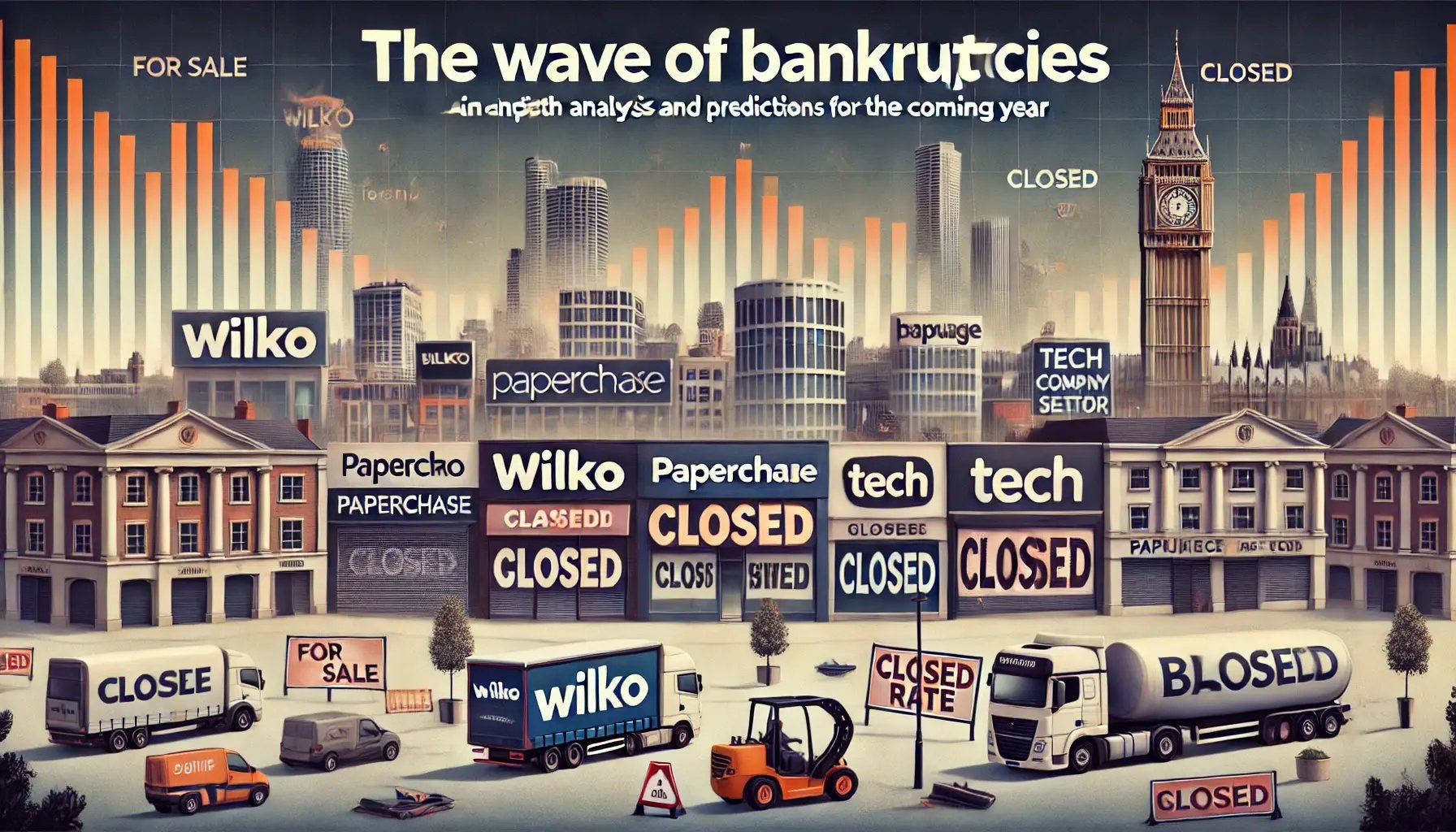The European Union (EU) has long been a hub of economic power and innovation, home to some of the...
The Wave of Bankruptcies in the UK
 Introduction
Introduction
The UK economy has faced a tumultuous period, marked by rising insolvencies across various sectors. The combined pressures of inflation, high-interest rates, and reduced consumer spending have created a challenging environment for businesses. This article delves into the sectors most affected by recent bankruptcies, highlighting key companies that have succumbed to financial distress and examining the broader economic implications. We will also provide predictions for the coming year based on current trends.
Retail Sector: A Major Casualty
The retail sector has been one of the hardest hit, with several prominent names declaring bankruptcy.
Wilko, a major high street retailer, entered administration in 2023. The company, which operated 400 stores and employed over 12,000 workers, struggled with mounting debts and declining sales (Evening Standard). This collapse reflects the broader challenges facing retailers, including reduced foot traffic and the shift towards online shopping.
Other notable retail casualties include Paperchase, Planet Organic, and Le Pain Quotidien (Evening Standard). These brands faced similar issues, such as rising operational costs and changing consumer behaviors. The retail sector’s struggles underscore the significant transformation in consumer habits, exacerbated by economic uncertainties and the pandemic's lingering effects.
The Body Shop's filing for Chapter 7 liquidation in the USA further highlights the international pressures on UK-based companies. Despite its strong brand recognition, the company could not withstand the financial headwinds (Intellizence |).
Construction Sector: Struggling with Costs
The construction sector has also seen a high rate of insolvencies. Increased material costs, supply chain disruptions, and labor shortages have created a precarious situation for many firms. The construction industry’s financial stability is further threatened by high-interest rates, which increase the cost of financing projects (Yahoo Finance).
Technology Sector: The Bubble Bursts
The technology sector, once a beacon of rapid growth, is now experiencing significant turbulence. The sector had seen an influx of venture capital, leading to an oversupply of competitors. As funding has dried up, many tech firms have been unable to sustain operations.
Experts have likened the current situation to the dotcom bubble of the early 2000s, where a surge in speculative investments led to numerous failures when the market corrected itself. This trend is expected to continue, with more tech companies facing financial distress in the coming months (Evening Standard) (Intellizence |).
Haulage Sector: Hit by Rising Costs
The haulage industry is particularly vulnerable due to its reliance on fuel and debt financing. Rising fuel costs, higher interest rates, and decreased demand have created a perfect storm for this sector.
Companies like Knights of Old and Mark Stewart Ltd have already gone bankrupt, and many others are at high risk. Around 33% of businesses in the haulage sector are considered at imminent risk of collapse, up from 22% a year ago (The Loadstar). The Road Haulage Association has called for government support to help mitigate these challenges, including subsidies for low-carbon fuel alternatives and reforms to the Apprenticeship Levy to aid in recruitment and training (The Loadstar).
Predictions for the Coming Year
As we move into the next year, several trends are likely to shape the economic landscape:
-
Continued Insolvencies:
- The trend of rising insolvencies is expected to persist. Sectors already under pressure, such as retail, construction, technology, and haulage, will likely see more companies entering administration or liquidation (Evening Standard) (Intellizence |).
-
High Interest Rates and Inflation:
- The persistence of high-interest rates and inflation will continue to squeeze margins for businesses. Companies with significant debt burdens will find it increasingly difficult to service their loans, leading to further financial distress (Yahoo Finance) (The Loadstar).
-
Government Intervention:
- There may be increased calls for government intervention to support struggling sectors. This could include subsidies, tax relief, and other measures aimed at easing the financial pressures on businesses (The Loadstar).
-
Shift in Consumer Behavior:
- The ongoing economic challenges are likely to further shift consumer behavior towards more cost-effective and online shopping options. Retailers will need to adapt to these changes to survive (Evening Standard).
-
Technological and Structural Adjustments:
- Businesses may seek to streamline operations and adopt new technologies to reduce costs and improve efficiency. This could include increased automation and digital transformation initiatives (Intellizence |).
Conclusion
The recent wave of bankruptcies in the UK highlights the fragility of the current economic environment. Retail, construction, technology, and haulage sectors have been particularly affected, but the underlying issues of high inflation, interest rates, and changing consumer behaviors are systemic. Addressing these challenges will require concerted efforts from both businesses and policymakers to stabilize the economy and support at-risk sectors.
The coming year is expected to be challenging, with continued financial distress across multiple sectors. However, with strategic adjustments and potential government support, businesses can navigate these turbulent times and emerge stronger.
For more detailed information, you can refer to the sources used:



